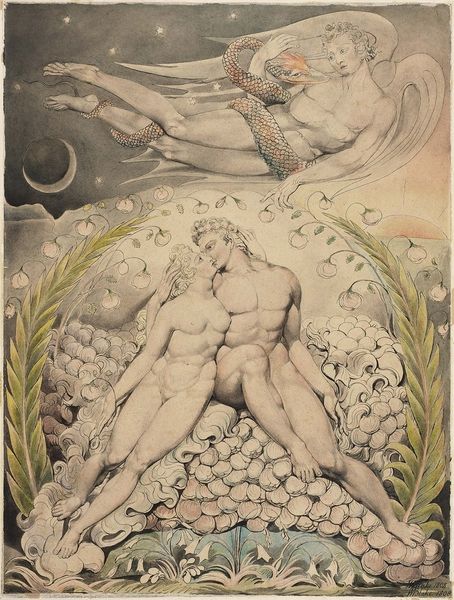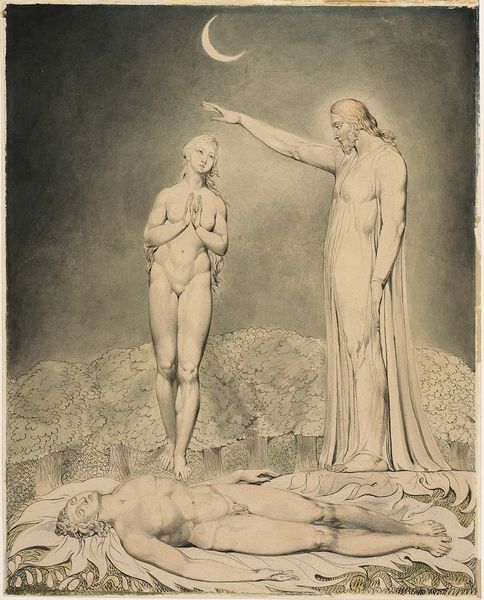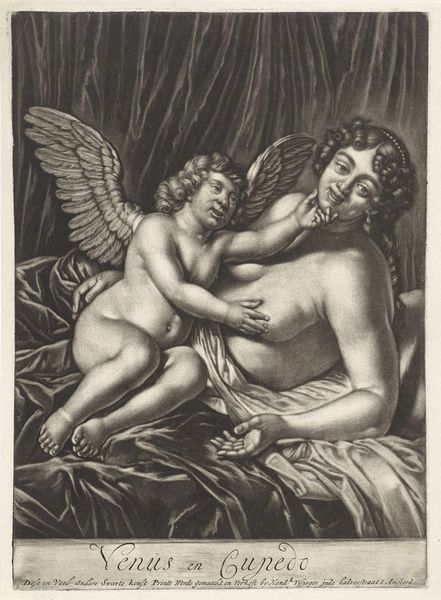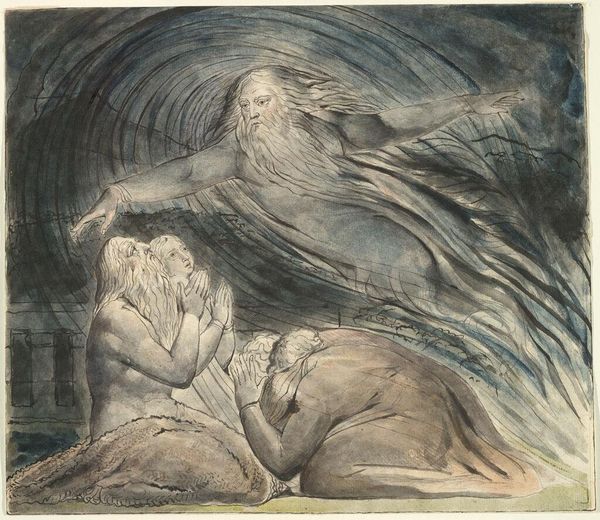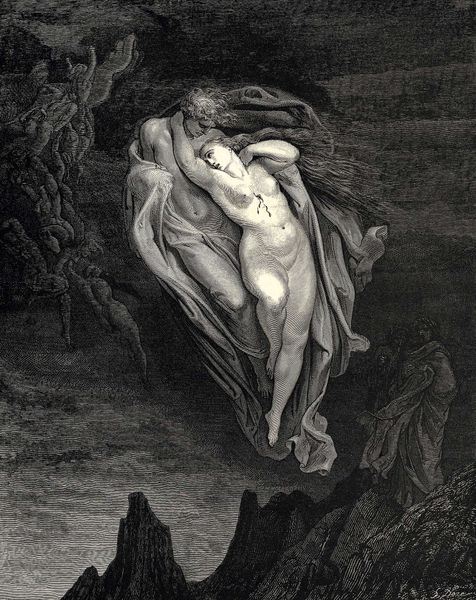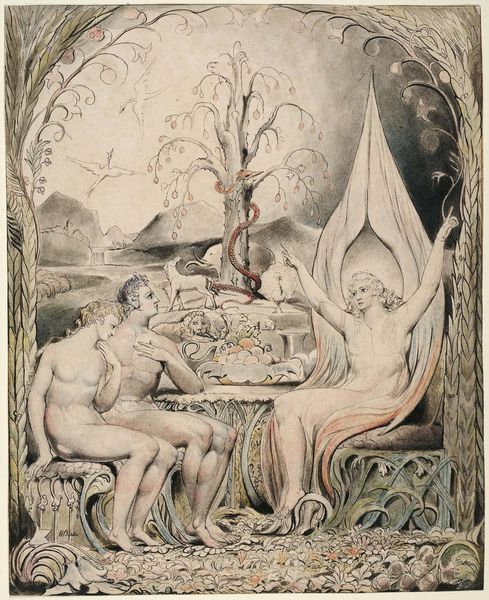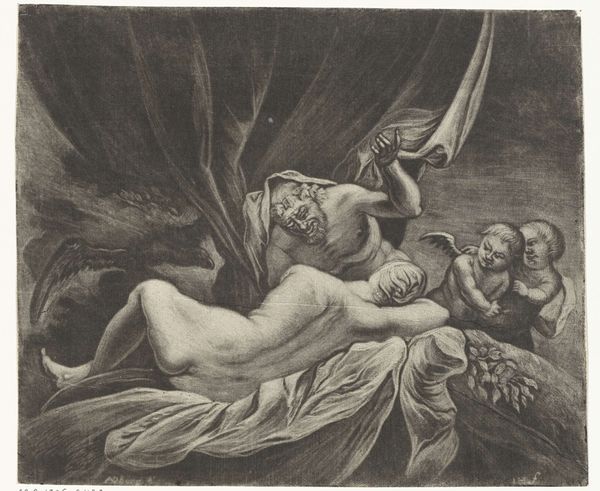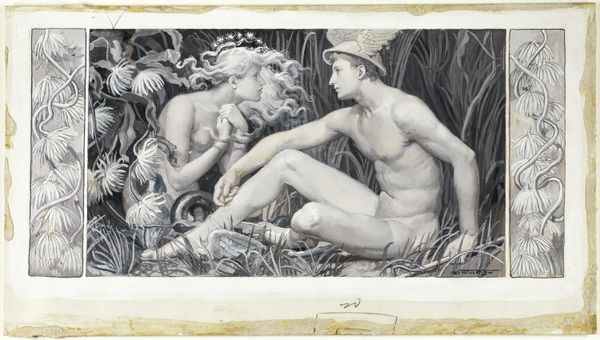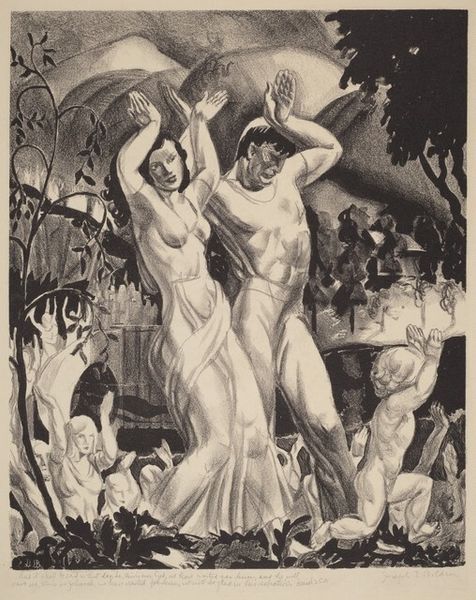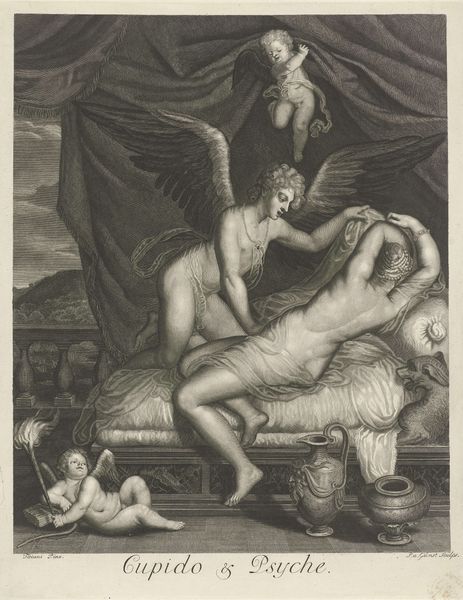
drawing, watercolor
#
drawing
#
pencil sketch
#
landscape
#
figuration
#
watercolor
#
romanticism
#
mythology
#
watercolour illustration
#
pencil art
#
watercolor
Copyright: Public domain
William Blake made this illustration to Milton's Paradise Lost using watercolor and ink. Blake was a printmaker by trade, so he was highly attuned to the specific qualities of these materials. The ink, likely iron gall, has a sharp linearity, ideal for defining the figures' contours. Then, the watercolor wash adds a dreamlike quality. Note how Blake doesn't fill in all the forms; he lets the paper breathe. This isn't just aesthetic; it's about the economics of production. He was often commissioned to make illustrations, so using watercolor was a relatively quick way to add depth and tone. The layering of washes creates a luminous effect, especially in the angel's wings and the moonlit sky, and gives the image its ethereal quality. It’s a perfect translation of Milton’s epic poem into visual terms, one that speaks to both the divine and the very human act of making art. By understanding Blake’s process, we gain a deeper appreciation for the art and the context in which it was made.
Comments
No comments
Be the first to comment and join the conversation on the ultimate creative platform.
